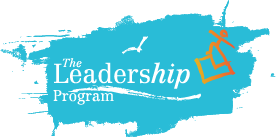Have you ever felt like your students just don’t want to listen to you? That there are a few students who are always trying to take you and the class off-track? That it feels impossible to get any actual teaching done without spending over 85% of your time and energy trying to manage the behaviors in the class?

Photo Credit: "Couch", spacemanor, https://www.flickr.com/photos/spacemanor/
You are not alone. Effective classroom management starts with an intentional approach that helps the teacher meet their students where they are and, based on that assessment, create an effective learning experience for them. Our Stop, Observe, Analyze and Respond (SOAR) approach to classroom management is non-traditional counseling within classroom management and builds teachers’ skills in
- Engagement
- Identifying behavioral indicators of emotional needs
- Appropriate use of self
- Responding to the emotional needs to help reduce incidents.
Teachers can practice SOARing when they encounter challenging behavior from a student: First, stop: don’t react immediately.
Second, observe: what behavior is the student exhibiting?
Third, analyze: why might the student be exhibiting that behavior? What’s behind it?
And finally, respond: in a way that actually meets the need behind the behavior.
This approach is based on research and evidence from Developmental Psychology, Cognitive Neuroscience and Clinical Social Work. Some of those theories are:
- Attachment Theory (John Bowlby, Margaret Mahler)
- Relational Therapy (Donald Winnicott)
- Object Relations (Mary Ainsworth and Margaret Mahler)
- Neuroscience of Engagement (Daniel Goleman, Kurt Fischer, Mary Helen Immordino-Yang, Dan Siegel)
The SOAR approach is not simply about how you respond when a behavior issue arises, but also how you set up your class each day to create a safe and welcoming environment for your students.
Here are four essential SOAR strategies for setting up a thriving, safe, and friendly classroom environment:
- Meet students where they are: As students enter the class, assess where they are at and what is going on with them, without judging it. It often helps to do a quick check-in at the beginning of class to get the temperature of the room and give students a chance to express whatever is going on for them (a lot of times this expression will be negative—that’s ok, great things start from a place of truth and a lot of times students just need a chance to get it out without being reprimanded). The goal is to find out who is having a challenging day so that we can prepare ourselves to help that student turn it around. One teacher in a recent post-SOAR-observation conference mentioned that she noticed that the students were angry as they entered because they had received some bad academic news in a previous class. That was an effective assessment. So, the question then becomes, how do we let them get out those negative feelings in a healthy and productive way so they can move forward with what you need to teach them for that lesson?
- Find a relevant window into the content: We must get buy-in from our students before anything positive can happen. Once you have given them the opportunity to express where they are without judgment, it is important to figure out a relevant way to open up the topic/lesson prepared for the class you are teaching.
Here is a specific example I gave one teacher in a SOAR-observation conference: Since your topic for the day was a reflection on the year, instead of handing them the reflection sheet immediately as they entered the room and telling them to fill it out, you could have shown them a brief clip of the Cleveland/Golden State final game 7 NBA basketball game followed by a clip of Kevin Curry reflecting on his team’s loss and what he could have done better to have succeeded in the game. After watching the clip, I would ask the students for their observations and create a discussion based on what they saw and how even the greatest athletes in their sports are always reflecting on their work, especially when they lose. Ask your students why they think that is the case. This would lead you into the importance of reflection for today’s lesson, and that it is through this important process that we can figure out how to improve our performance moving forward.
- Scaffold activities and build in effective transitions: How do we make activities dynamic and engaging? How to we use transitions intentionally? How do we scaffold the day so that students can relax and feel safe? For example, start with an individual task, then move to a partner share, then build up to a small group challenge, and finally end with individual assessments of what was learned in this experience. By scaffolding your day, you create a safe space for students to ease into, without putting them on the spot or making them feel cornered.
- Empower Student Choice: It is important to come up with techniques to empower the students to make choices around what would be most interesting to them as often as possible. If your students feel like they have a “say” in the day they are more likely to participate in the process.
Here is a specific example I gave one teacher in a SOAR-observation conference: With the film choices you were offering them, I would have given them 3 interesting and relevant choices, written the titles on the white board and then given them little stickers so that they could vote for their 1st pick. The most votes would be the chosen video and you would have buy-in from them to watch it. This is especially true for the students that are giving you the hardest time. How can you empower them to help you? They are just screaming out for attention. Listening to them and figuring out what their emotional need is behind their behavior would help you come up with some strategies to empower them and help you along the way. By embracing their resistance, you can start to diminish it. We saw this in your session in that moment when the female student kept saying ‘no’ to everything you were asking her. You demonstrated a best practice when you highlighted this student’s resistance in a light and fun way and the result was that you all laughed it off and were able to continue moving forward.
Since we’ve started using the SOAR approach to classroom management and set-up, we’ve observed greater levels of productivity in our classrooms. We don’t get it right all the time, but when we continuously work to remember that our students, just like us, have good days and bad days and sometimes express negative emotions and behaviors to release energy from something that has nothing to do with us, we are more prepared to respond (rather than react) in a way that lets our students know we see them, we understand them, and that they are welcome in our classroom. No matter what.
What are your best classroom management practices? Share them below or tweet me @GregShamie.
"An Off-The-Couch Approach to Classroom Management", The Leadership Program, Inc. 2016


Comments [0]
Click here to read/write comments